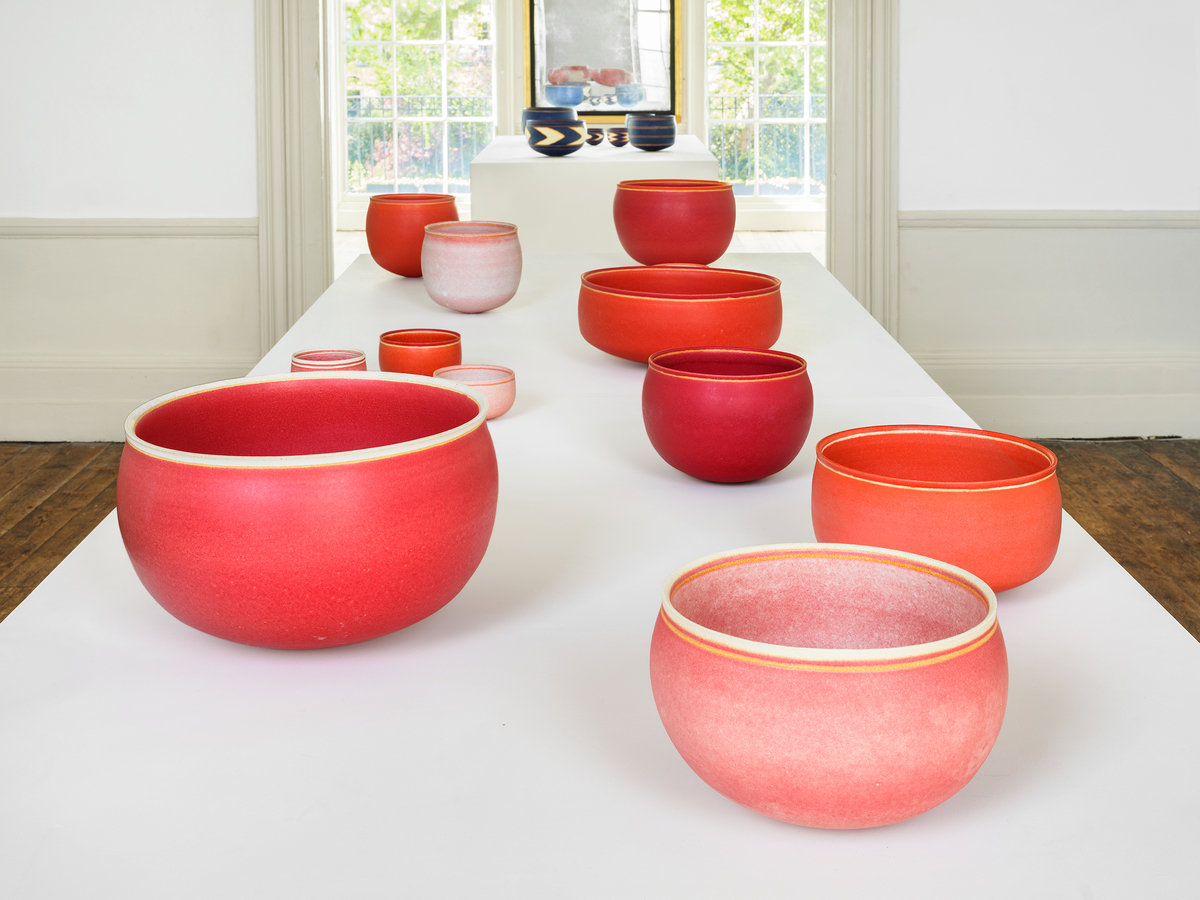


Tristan Hoare, Fitzroy Square
6 May - 1 June 2022
"I am obsessional - I do nothing but pots. Large pots, very large pots, small pots and pots that range in between” states Alev Ebüzziya Siesbye in a recent interview. Bowls, pots, vessels and containers fill the Georgian rooms of Tristan Hoare gallery.
Upon entering the large room of the gallery I am overwhelmed by the colours of the vessels. Electric and deep blues, light, and soft lapis: blue in its many variations. They remind me of the daily changes of the Mediterranean Sea, the ornaments of Iznik ceramics, Renaissance Madonnas and the deep abstractions of Yves Klein. In her simple pots Alev Ebüzziya Siesbye brings together memories and recollections of the East and West.
Ebüzziya Siesbye was born in Istanbul in 1938, the same year that the first Turkish president Kemal Atatürk died. This coincidence helps situate Ebüzziya Siesbye in the formation and transformation of present-day Turkey. She spent her early life across Turkey and northern European countries. First boarding school in the UK, then finishing high school in Istanbul where she had her first experience of ceramics, later moving to Western Germany in 1958 to work as an industrial ceramicist at the Höhr-Grenzhausen factory.
She returned to Istanbul and enrolled to help at the studio of the pioneering Turkish ceramicist Füreya. According to Alev’s accounts, her experience at Füreya’s studio was important for establishing the notion of the workshop / studio as a place of creative freedom, as opposed to the rigorous control of the mass-produced ceramics she then learnt in the ceramic factories that she later worked in. She was so moved by this experience that instead of pursuing a degree in English Philology and Literature at Istanbul University as she had initially planned, she started to study sculpture at the Academy of Fine Art.
In the 1960s, Germany established a policy of recruitment for Turkish workers to fill the demands of its booming economy, later on, Ebüzziya Siesbye moved to Copenhagen to work for the Royal Copenhagen factory. This experience in industrial ceramics gave her a unique perspective on traditional craft and industrial production. These two methods are often held in opposition throughout the history of ceramics -- from William Morris to the short-lived experience of the Bauhaus ceramic workshop. Ebüzziya Siesbye later settled in Paris, spending longer periods in Istanbul.
Alev Ebüzziya Siesbye’s long and complex life is one of solitude and reclusive work. Her work is often described as minimalist, aesthetic, sculptural, and ambitious. Yet, her knowledge of craft -- the rigour and precision of its execution speaks loudly on her behalf. The artist uses ‘coiling’ an ancient technique of working with large bands of rolled clay on top of each other which she later perfects with fingertips and tools. Such a method calls forth a dialogue between the hand and clay; requiring not only manual skills but also patience, repetition, and precision.
The exhibition cleverly combines pots in clusters of forms and colours creating rhythm to the different compositions. The second room is a surprise of warm reds, oranges, and pinks in contrast to the deep cold blues of the previous room. A visual feast.
“Clay is a material that is alive”, states Ebüzziya Siesbye, “it registers everything you do, it is an eternal fight, challenge, dialogue.” The conversation between the artist and her material resonates across the exhibition. The dialogue continues beyond the making, and goes through the pots, vessels, and bowls displayed in the rooms. Topics of discussion emerge in the middle of the contrasting elements of the pots, in the distance that exists between red and blue, bringing together repetition and intuition.
Ilaria Puri Purini
Senior Curator
Tristan Hoare, 6 Fitzroy Square, London W1T 5HJ
Opening Times: Tuesday - Saturday 11am - 6pm
Exhibition Open until 1 June